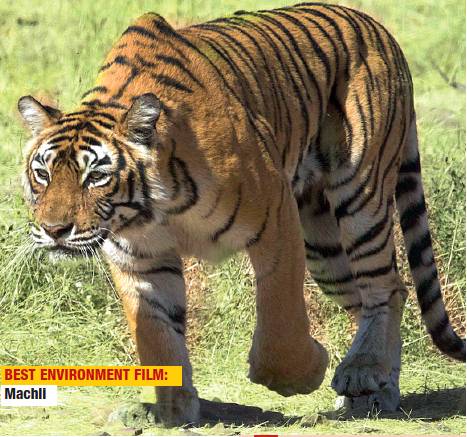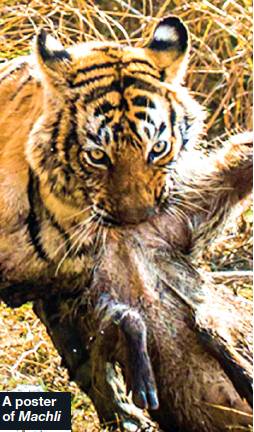It has been 12 years since I decided I am not going to push any social messages through my documentaries,” begins Nalla Muthu, well-known wildlife cinematographer and movie maker, whose film on the iconic tigress of Ranthambore by the same name, Machli, has won the National Award for the Best Environment Film.
“When I made the series Living on the Edge for Doordarshan, in 1992, despite the channel giving me a good slot, the series never reached the people. I stopped preaching. I started approaching my films on wildlife like a commercial potboiler — entertainment was my first priority.
When I began shooting Machli, I gauged who my audiences were. The immediate locals in the vicinity of the Ranthambore sanctuary — that became the location. Next was storytelling, emotions, suspense… I am putting across the message from a different perspective in this film,” says Nalla, who is a National Award veteran, if there’s a phrase like that.
“This is my fifth National Award,” he says calmly. “Winning this award doesn’t change much when it comes to the ground reality. It’s been a tough journey. The forest department charges ₹15,000 per day for an entry during safari timings alone.
High-tech camera, boarding, bare minimum cast, transport — imagine doing this for two years continuously without any hope that this film will ever get a buyer — that’s ₹20-25 lakhs I am talking about. That struggle continues till date. I must actually thank my wife, Anvita who resigned from ISRO to follow my dream with me.”

‘People laughed when I told them I was going to make a film on tigers’
Nalla says, “Without her to take care of everything else in my life, none of my works would have been possible. People laughed when I told them I was going to make a film on the tigers of Sariska a decade ago. There were two tigers — one male, one female, with collars. They told me no one will buy a film with tigers with collars. I told BBC 10 minutes into the film, you will forget they are wearing collars. It worked — tiger count is on a healthy climb now. But people still laugh at me and my ideas.”
He continues, “So, what has changed? For the people I am dealing with, foreign channels, etc, no one understands the importance of the National Award. It works for Bollywood and the regional cinema industries, perhaps. For me, this award brings personal satisfaction of a job well done.
I get a good response on Facebook. My colleagues ask me how much money I have got; my commissioners fear I am going to raise my rates. But I am still struggling to make films my way. So, for me, five awards down the line, I am still on the same boat.”
The World’s Most Famous Tiger is tigress Machli’s story, a 60-minute documentary that trails the life of Ranthambore’s most famous tigress, whose death in August 2016 made waves. “Machli had nine offspring, and has a big hand in making a healthy count of tiger population in India.
I have treated Machli like a heroine, charting her prime, success, later years of life, and finally, her death. Through her story, I am telling people the importance of tiger conservation — how even a single tiger counts,” says Nalla, and adds, “Machli’s story, for me, started in 2007, when she was just 11, and I’ve been trailing her since then.
After a while, I began to connect emotionally with her. I saw her a few days before she passed away, and filming her last moments was tough for me. This documentary and this award are a tribute to one of the fiercest and yet gentlest tigers I have come across.”

Source: The Times of India, 12 August 2019, Chennai.